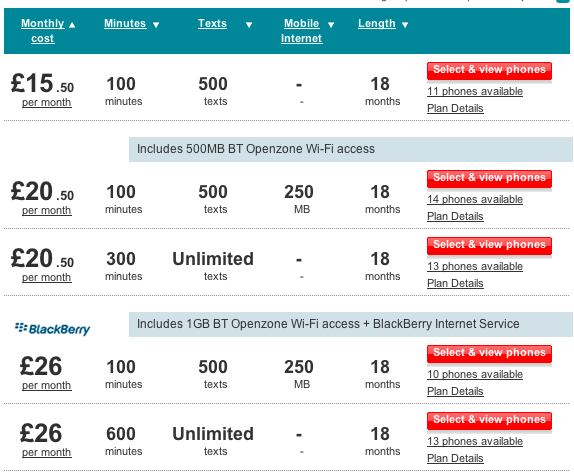Just how important is carrier subsidy in the marketplace? Huge.

Carrier subsidy is one of those areas of the marketplace that is traditionally overlooked — completely — by many commentators, especially those with a rather large partisan axe to grind (e.g. iOS fanboys vs Android fanboys).
During discussions about Nokia’s future, many a time I’ve indicated that executives privately point out they are hearing good noises from carriers in the context of their upcoming Windows Phone launch.
This isn’t just good news — it’s brilliant news. When you want to get as many devices out the door as possible, carriers are your friend.
Carriers — or operators, as I usually refer to them — are still very much the kingmakers in the Western marketplace.
As a manufacturer, your primary challenge is being ‘ranged’ — that is, accepted for distribution. It’s most certainly not guaranteed. Many a time, I remember being utterly despondent upon learning that (for example) the Nokia N93 wasn’t going to be ranged by a particular carrier.
If all the carriers line up with their arms crossed, the chances are you’re going to sell next to nothing in that particular territory. So ranging is important.
Once you’ve got agreement for the carrier to take your handset, the next issue is the subsidy. Although this is generally fixed, according to the cost of the device, there are frequent exceptions, especially when a carrier wants to exert influence. In some cases, this can be very influential. In other cases, as we’ve seen with the iPhone, it often doesn’t matter what the price is, the consumer’s going to buy it anyway.
Most manufacturers can, for example, estimate at what point the device becomes ‘free’ on UK carriers. e.g. If a Nokia handset costs £200, it’s most likely going to be free on 18-month contracts. If the device costs £400, it’s likely to be free on £40-ish a month contracts, usually 18/24-months. So manufacturers have an idea.
If you’re Nokia, heading out to market with an entirely new phone range, the best thing you can hear is carriers making excited noises. Aggressive pricing from carriers could well make or break the success of the launch. Indeed, there’s lots of whispering going around the market indicating that Nokia/Microsoft will get a lot of help from certain carrier groups, anxious for the perceived Apple/Google duopoly to be broken — or at least tamed. (RIM has a very healthy and highly integrated arrangement with carriers so I’m not counting them).
In terms of consumer perception, getting a free handset is something we in the UK have come to accept. In recent years we’re beginning to understand that ‘free’ and ’12-month contract’ isn’t quite compatible, unless you’re talking about a really, really cheap device.
But just how important is subsidy in the consumer mindset? Very.
Let’s have a look at how the Americans get on with it. In the States there seems to be some kind of wilful desire to avoid recognising the full cost of a device. As an example, let me quote the first paragraph from this GigaOM post published yesterday. Have a read:
Huawei, the Chinese company I soon expect to be a household name in the U.S. has a new handset targeted at first-time smartphone buyers. AT&T introduced Huawei’s Impulse 4G on Wednesday, with a Sept. 18 launch date. The Impulse 4G offers all the basics — and then some — of an Android-powered smartphone and will cost just $29.99 with contract.
via Huawei’s $29 Android aims at AT&T feature phone users — Mobile Technology News.
Look at the title!
A $29 handset? Wow!
No. It’s probably more like $150. Or $200. But when you’ve got media such as GigaOm breezily commenting on the purchase price as being rather impressive and then pointing out that it’s “with a contract”, you can see how influential subsidy really is.
AT&T who’re ranging the product could very well have made the up-front price $5. Or $7.99. Or $200.
Kevin, the author of the piece, continues his post with this sentence:
So what kind of smartphone does $30 get you?
Quite amazing.
But then again, this is how the States does it. There, the carrier usually chooses a price and sticks to it, no matter what your service plan cost (there are some exceptions).
In the UK, the up-front cost of the handset usually depends on how much you contract for. £15 a month and you’ll probably pay near full price for the phone. £45-50 a month and it’s nearly always free.
With this in mind, watch the carrier pricing of the Nokia Windows Phones. I think they will be competitively priced and enthusiastically marketed by the world’s carriers. (After that, it’s down to the consumer for the ultimate test)
How important is subsidy to you?
Sometimes I love it. I like the convenience. I like the ‘yeah, do it’ feeling — of being able to buy a phone without even having to get your credit card out. I do feel it 9 months later when I’m stuck with a £45/month price plan I don’t need — but with another year to go on contract.
I know quite a few Mobile Industry Review readers who have simply become subsidy independent. It’s a bit of an arse when it comes to buying new phones (all that cash up front…ouch), but you can get by on £10-20 a month on service fees.
What’s your poison?



